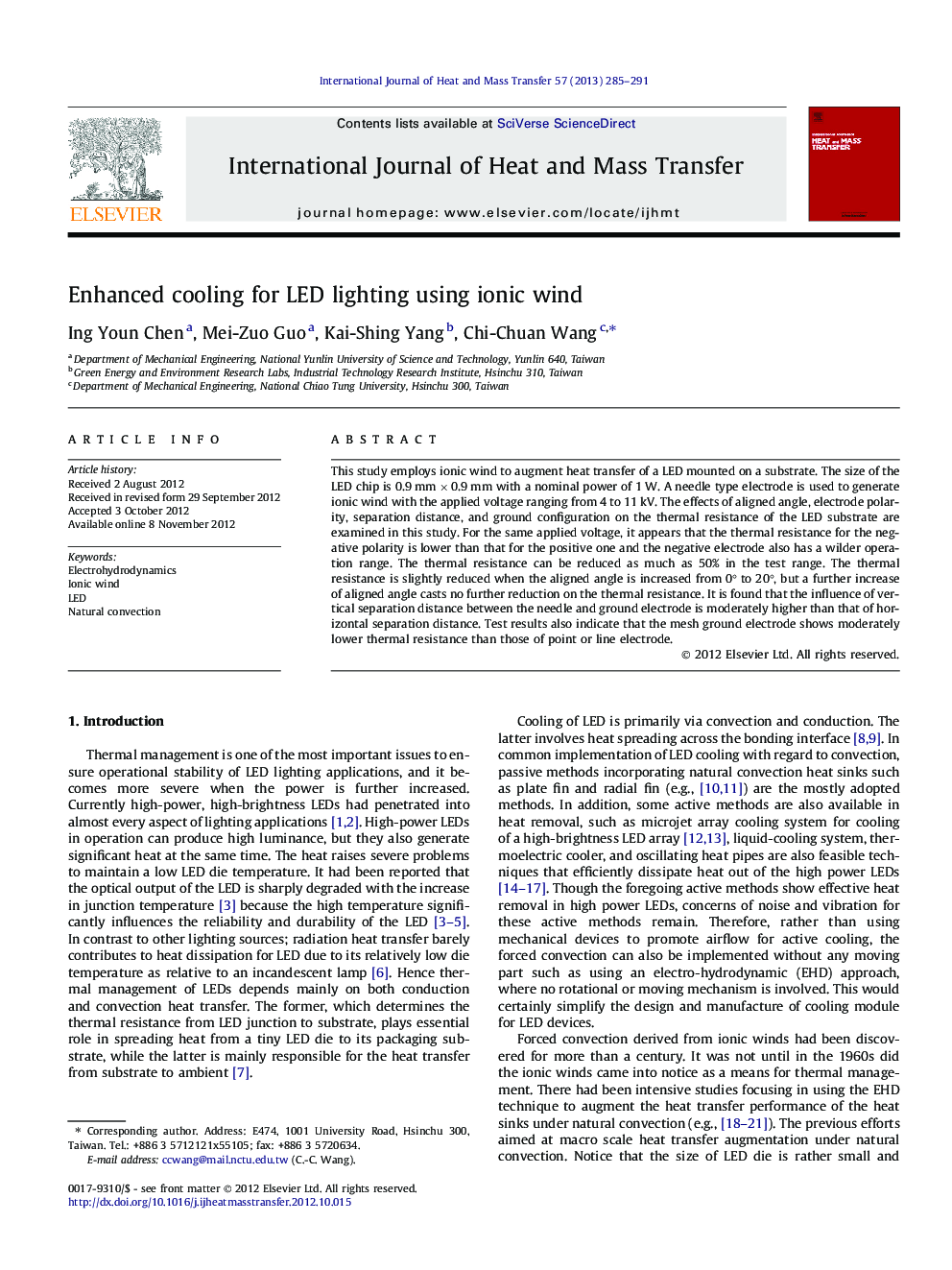| Article ID | Journal | Published Year | Pages | File Type |
|---|---|---|---|---|
| 658514 | International Journal of Heat and Mass Transfer | 2013 | 7 Pages |
This study employs ionic wind to augment heat transfer of a LED mounted on a substrate. The size of the LED chip is 0.9 mm × 0.9 mm with a nominal power of 1 W. A needle type electrode is used to generate ionic wind with the applied voltage ranging from 4 to 11 kV. The effects of aligned angle, electrode polarity, separation distance, and ground configuration on the thermal resistance of the LED substrate are examined in this study. For the same applied voltage, it appears that the thermal resistance for the negative polarity is lower than that for the positive one and the negative electrode also has a wilder operation range. The thermal resistance can be reduced as much as 50% in the test range. The thermal resistance is slightly reduced when the aligned angle is increased from 0° to 20°, but a further increase of aligned angle casts no further reduction on the thermal resistance. It is found that the influence of vertical separation distance between the needle and ground electrode is moderately higher than that of horizontal separation distance. Test results also indicate that the mesh ground electrode shows moderately lower thermal resistance than those of point or line electrode.
